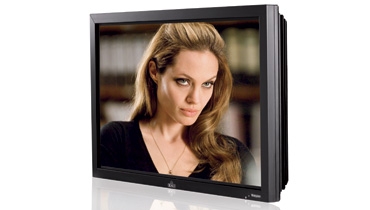HDTV Unchained Page 3

CONNECTION CONUNDRUMS
Advances in connectivity and convenience won't be limited to the outdoors, however. Thanks to the difficulty of running HDMI cables over long distances, and to the growing desire of consumers for neater installations, there's a real need for new connectivity solutions.
"There are always going to be advances in display technology," says NuVision CEO Scott Deley. "But we hear more requests for improved connectivity." To this end, his company is planning to launch TVs with a proprietary feature he calls Networx -- a plug-in card that can accept a Cat-5 connection that carries component video and (eventually) HDMI and Internet video.
Some manufacturers will be introducing wireless HDTV technology built into TVs; Hitachi's Whalen says his company is already offering that technology in Japan. Several wireless HDMI products debuted at the CEDIA Expo, but the technology remains expensive -- and it's just another way to get the same content to your HDTV.
What may be more exciting is incorporating Internet video into the next generation of TVs. Pioneer's Meyhoefer confirms: "I think Internet connectivity will become more mainstream in TVs in the next year or two,"
Internet video capability opens up the potential for a nearly infinite variety of programming that TV viewers aren't getting now. In fact, Internet connectivity is already fairly common in TVs; Panasonic, Samsung, Sharp, Sony, and others have included it in select models.
But the video services these TVs can access have mostly been limited to a small number of channels with content repackaged for display on TVs. "You have to make sure that the consumer's experience is consistently good," Whalen says.
Ideally, though, consumers would like to access any Internet video site through the TV, the same way they can on their computers. Dan Schinasi, senior manager of HDTV product planning for Samsung, explains that while such functionality will be possible in coming years, today's TVs lack the internal digital-processing horsepower to run a browser as well as the onboard digital storage to hold browser updates.
We haven't even discussed some of the advances you'll see in TV technology this year. What's next? TVs with slimmer chassis and even thinner bezels. And the faster refresh rates of the latest LCD and plasma TVs may make high-quality 3-D a reality toward the end of 2009 or sometime in 2010 (see "3-D: It's Back!" on page 57).
With so much going on in HDTV, it seems as if this decade-old technology has only just launched. But thanks to the power of digital technology, even all this might just be the start of what's to come.













































